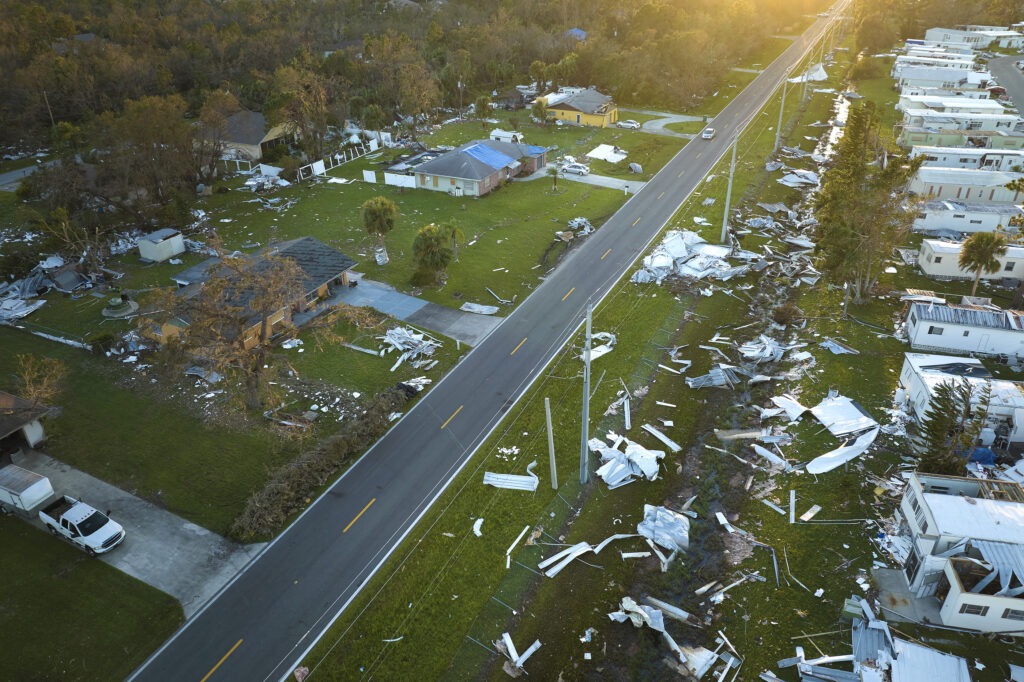In late September and early October 2022, Hurricane Ian smashed through Florida and several other states. Although it caused more than $50 billion in short-term Hurricane damage, the storm had largely disappeared from the headlines. However, for the people and businesses that were in Ian’s destructive path, the hardships may just be beginning.

Most of us are aware of the short-term damage a powerful storm leaves in its wake, however, the long-term environmental and societal problems are only well-understood by those who have endured them.
The media may quickly forget most storm victims, and Florida insurance companies often quickly close their files in these situations. However, an environmental lawyer doesn’t forget. We continue to advocate for victims and help them deal with the long-term environmental and financial changes commonly associated with these storms.
General Environmental Effects
Tropical storms often affect coastal energy and chemical production facilities, especially in Texas, Louisiana, Alabama, and Mississippi. Storm-related flooding, loss of power, and property damage can lead to the release of toxic chemicals into the environment. These chemicals then contaminate surface water, groundwater, and flow into local waterways, resulting in threats to water supplies, as well as fish and wildlife.
Fires are common as well, which can be caused by system failures, exposed electrical equipment, and infrastructure damage. These secondary disasters can release toxic fumes into the atmosphere, resulting in air pollution and respiratory hazards.
Water run-off from affected farmland can carry toxic pesticides, fertilizers, and herbicides to new areas, causing severe widespread damage to marine life. Hospitals, heavy manufacturing facilities, and gas stations are also high-risk areas for environmental pollution during a hurricane.
On a related note, damaged boats, vehicles, tanks, and stray containers often release gasoline, oil, propane, anti-freeze, and a variety of other toxic chemicals into the environment.
Just before the 2019 hurricane season began, the Environmental Protection Agency sounded the alarm regarding waste mitigation. The agency encouraged the public to ensure drums, oil containers, propane tanks, paint cans, vessels, and other such items were properly stored and secured before a hurricane hit.
An environmental lawyer helps businesses and families deal with their insurance companies and otherwise obtain financial relief in these situations.
Hurricane Damage in Fishing
The long-term effects of hurricane damage on commercial and recreational fishing are often worse than the initial effects.
Hurricane Ida, a smaller storm than Ian, affected much of the Gulf Coast in 2021. The storm killed an estimated 280 million fish in Louisiana alone. Many of these were inland fish that were far away from the hurricane itself but died due to the long-term effects of storms, including::
- Salinity Changes: Coastal flooding often quickly affects freshwater lakes, rivers, and ponds. Most fish have no effective natural defenses against such rapid changes.
- Flood-Related Strandings: Hurricane and tropical storm rains almost always flood low-lying areas. When these flood waters recede, any fish that ended up in these temporary pools quickly die.
- Cloudy Conditions: Long periods of cloudy days disrupt photosynthesis, which provides vital oxygen for underwater ecosystems. . In the absence of adequate photosynthesis, oxygen levels drop and fish die.
- Turnover: As noted on the Fish & Wildlife Foundation of Florida website, “In small lakes or ponds, strong winds often push surface water to one side of the lake. Water from the bottom then rises to fill the space at the surface, bringing sediments and organic material with it. The water from the bottom is naturally low in oxygen, and the materials brought to the surface may include hydrogen sulfide, which in high concentrations can kill fish. Bacteria is also brought to the surface and begins decomposing the organic material, using up oxygen in the process.”
On a related note, hurricanes might also spread invasive plants and animals. Wind and water often move exotic plants to new locations. Invasive fish, once concentrated in a small area, may also move to new locations. Hurricanes have also destroyed the breeding facilities of exotic species, like Burmese pythons.
If your family or business struggles with long-term hurricane damage, contact the experienced New York environmental lawyers at Napoli Shkolnik PLLC for a free consultation. We handle these cases on a nationwide basis.